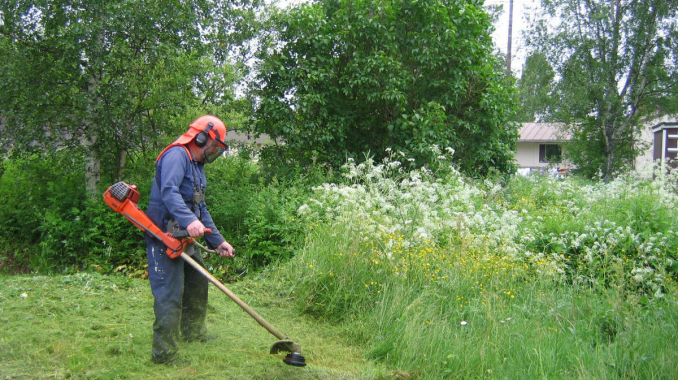Ticks (Download)
TICKS 1 What are Ticks? Ticks fall under the class “ Arachnidia ,” which includes s piders, s corpions and mites. Ticks are small parasitic creatures that feed off the blood of host. Ticks typically dwell on the skin of hosts. Hosts can be animal or human. There are roughly 850 species of ticks. Nearly 100 of them are disease-transmitting 2 Tick Life Cycle Ticks have 3 developmental stages ( larvae, nymphs and adult ticks ). The type of host may change between each stage. Ticks have the widest range of hosts during the nymphal development stage. This means an increased chance of spreading disease. 3 Tick Habitats Ticks attach themselves to their hosts as they pass by, and are found in: Dense wooded areas Tall grassy areas Leaf litter Ground cover Low bushes / shrubs Beware of similar conditions for tick habitats in and around construction sites! Avoid such areas and enter only while wearing PPE. 4 Tick Facts 20% of ticks carry some form of disease causing bacteria. Ticks must be attached at least 36 hours to transmit bacteria. Nymphal tick bites cause the majority of disease cases. Nymphal ticks are most active in late May thru July Adult ticks are most active late October and early November If an attached tick is found in time and removed, chances of developing Lyme Disease is just 1-3% Information from Hunterdon Health Department: www.co.hunterdon.nj.us/health/lymeinfo.htm 5 Diseases Carried by Ticks Many diseases can be transmitted by ticks, most commonly… LYME DISEASE (most common) HUMAN EHRLICHIOSIS BABESIOSIS ROCKY MOUNTAIN SPOTTED FEVER One bite can transmit any of these and more diseases…Diseases are rarely fatal if treated promptly. Engorged Deer Tick 6 Lyme Disease Black-legged Deer Ticks are responsible for this most common type of tick-transmitted bacterial disease. Early Lyme Disease (days to month after bite) Large ring shaped rash appears at the location of bite. Symptoms are similar to the flu , including stiff neck, chills and fever, headache, and fatigue. Late Lyme Disease Symptoms include meningitis, arthritis, facial palsy, and heart abnormalities. Black-legged Deer Tick Information from Brookhaven National Laboratories http://www.bnl.gov/esh/shsd/PDF/SHSD%20Disease%20Sympton%20Handout.pdf Images from Hunterdon Health Department: www.co.hunterdon.nj.us/health/lymeinfo.htm Lyme Disease Causing Bacteria 7 Seasonal Distribution of Reported Lyme Disease Cases Information from: http://www.cvbd.org/4055.0.html Most Tick Related Lyme Disease Cases Occur in during the Spring and Summer Months when Tick Nymphs are most Prevalent 8 Lyme Disease – Treatment If diagnosed in the early stages, Lyme disease can be cured with antibiotics. Without treatment, complications involving the joints, heart, and nervous system can occur. Antibiotics such as Doxycycline , Amoxicillin, Ceftin , and Ceftriaxone (for late stages of infection) are used to treat Lyme Disease Treatment lasts from 10 to 28 days. Information from Hunterdon Health Department: www.co.hunterdon.nj.us/health/lymeinfo.htm Image from: www.dermatologist.org 9 Ehrlichiosis Ehrlichiosis is a disease caused by bacteria carried by the Lone-Star tick and Deer tick. It is considered an acute infection generally without chronic long-term consequences. The severity of the disease varies from person to person. May be life-threatening or fatal for elderly and others with compromised immune systems Information from Brookhaven National Laboratories: http://www.bnl.gov/esh/shsd/PDF/ESH%20COORDINATORS%20061108%20TICKS.pdf Lone-Star Tick 10 Ehrlichiosis – Symptoms Infected persons may have mild to severe symptoms including: fever headache muscle aches nausea vomiting diarrhea cough joint pains In some cases, Ehrlichiosis can result in coma, lung and kidney damage, other organ damages, and seizures. The infected site bears a rash similar to that of developing Lyme Diease . Information from Brookhaven National Laboratories & Publimed Health: http://www.bnl.gov/esh/shsd/PDF/ESH%20COORDINATORS%20061108%20TICKS.pdf http://www.ncbi.nlm.nih.gov/pubmedhealth/PMH0002357/ 11 Ehrlichiosis – Treatment Antibiotics such as Tetracycline or Doxycycline are used to treat Ehrlichiosis . Antibiotics should be initiated immediately when there is suspicion of Ehrlichiosis , whether it has been lab confirmed or not. This will prevent the infection from becoming critical. Treatment lasts for a minimum of 7 days to 2 weeks. Information from Brookhaven National Laboratories & Publimed Health: http://www.bnl.gov/esh/shsd/PDF/ESH%20COORDINATORS%20061108%20TICKS.pdf http://www.ncbi.nlm.nih.gov/pubmedhealth/PMH0002357/ 12 Babesiosis B abesiosis is a malaria-like illness caused by a protozoan parasite that is primarily transmitted by the black-legged deer tick. The disease may be asymptomatic (carrier shows no symptoms), but known symptoms include: fever chills sweating muscle aches fatigue hemolytic anemia Information from Brookhaven National Laboratories & Global Pediatrician: http://www.bnl.gov/esh/shsd/PDF/ESH%20COORDINATORS%20061108%20TICKS.pdf http://www.globalpediatrician.com/healthtopics-q10250-c10050-Ticks_and_Tick_Borne_Diseases.aspx Black-legged Deer Tick 13 If s ymptoms occur, the appear after an incubation period of 1-4 weeks, and can last several weeks Disease is more severe in the elderly and immunosuppressed individuals. This includes persons with HIV. Treatment includes Clindamycin and Quinine or Atovaquone and Azithromycin for period of typically 7 days. Improvements are typically seen within 48 hours. Information from Brookhaven National Laboratories: http://www.bnl.gov/esh/shsd/PDF/ESH%20COORDINATORS%20061108%20TICKS.pdf Babesiosis – Treatment 14 Rocky Mountain Spotted Fever The disease is transmitted by Wood Ticks and Brown Dog Dicks. Rickettsia Rickettsii is the organism responsible for causing Rocky Mountain Spotted Fever. Symptoms usually develop about 2 to 14 days after the tick bite and include: fever myalgias headaches muscle pains mental confusion petechial rash Brown Dog Tick Petechial Rash Information from Publimed Health: http://www.ncbi.nlm.nih.gov/pubmedhealth/PMH0001677/ 15 Doxycycline and Tetracycline are frequently used for both confirmed and suspected cases. Treatment usually lasts for 7 days. Patients usually see improvement within 48 hours. Information from Brookhaven National Laboratories: http://www.bnl.gov/esh/shsd/PDF/ESH%20COORDINATORS%20061108%20TICKS.pdf Rocky Mountain Spotted Fever – Treatment 16 OSHA Tick Statistics There were no OSHA-investigated fatalities caused by Ticks during the time period of 1990 thru 2010. While there are no recorded fatalities relating to Ticks in the construction industry, serious precautions should nevertheless be taken to reduce incidents. Tick bites can still result in severe pain and missed work due to illness. OSHA Fatality Data: 1190 – 2007 & 2007 – 2010 17 OSHA Regulations 1926.21(b)(2) The employer shall instruct each employee in the recognition and avoidance of unsafe conditions and the regulations applicable to his work environment to control or eliminate any hazards or other exposure to illness or injury. 1926.21(b)(4) In job site areas where harmful plants or animals are present, employees who may be exposed shall be instructed regarding the potential hazards , and how to avoid injury, and the first aid procedures to be used in the event of injury. OSHA Website: http://www.osha.gov/pls/oshaweb/owadisp.show_document?p_id=10607&p_table=STANDARDS 18 Personal Protection Measures When entering possible tick habitats… Wear light-colored clothing Wear loose-fitting clothing Wear leather gloves Tuck shirt into pants and pants into socks Wear closed-toed shoes Keep close to the center of pathways if possible Use a tick repellent Information from: http://turnthecorner.org/content/tips-protect-your-loved-ones 19 Tick Repellents 30% – 40% DEET content most effective for ticks Use on skin or clothing as directed Apply to the shoes and pant legs Permethrin containing products Use on clothing only, as it is an insecticide and can cause serious reactions if applied to skin Information from: http://turnthecorner.org/content/tips-protect-your-loved-ones 20 Perform Frequent Tick Checks…. …while in tick habitats AND when returning from tick infested areas Have another person check for ticks in hard to spot areas. 21 Tick Removal Use fine-point tweezers Grasp the tick CLOSE TO SKIN Pull gently Place removed tick in a plastic zip top bag marked with the current date (to bring to doctor’s office to see if it is carrying any diseases) Wash area with soap, water and antiseptic Contact a physician immediately Burning, suffocating, and poisoning of ticks does NOT work in removing them from host Information from: http://turnthecorner.org/content/proper-tick-removal 22 Site Precautions Proper Site Care Keep grass and foliage short Prune trees and shrubbery Remove old leaf and debris piles Increase sunlit area on site Avoid storing materials such as lumber near wooded areas Insecticides The Proper Use of Insecticides Can Greatly Reduce the Incidence of Tick Bites Late May : Apply Granular Insecticides Late September : Apply Liquid Insecticides Information from: http://turnthecorner.org/content/tips-protect-your-loved-ones 23 Think Safety Work Safely 24

